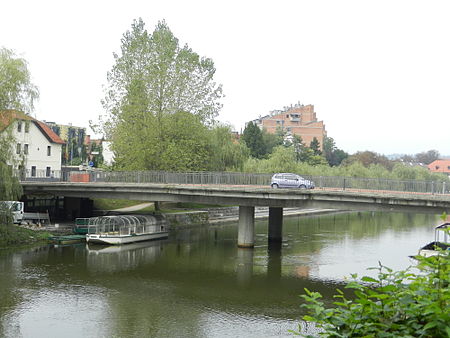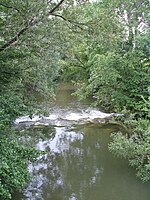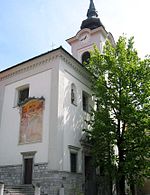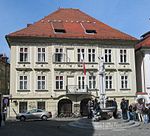Prule Bridge

The Prule Bridge (Slovene: Prulski most) or the Brickmakers' Bridge (Opekarski most) is a bridge crossing the Ljubljanica River in Ljubljana, the capital of Slovenia. It is located in the Trnovo District to the south of the Ljubljana old town and links the residential districts of Prule (Janežič Street; Slovene: Janežičeva cesta) and Trnovo (Brickmakers' Street; Slovene: Opekarska cesta). It is shaped like a wide platform on two columns with lookout balconies and with wide pavements, covered with red brick.The first bridge at the site was a wooden one, previously used as the St. Peter's Bridge, and transferred here around 1918. On the left bank, Jože Plečnik embellished the otherwise insignificant bridge with three poplars. The current bridge was built in 1993 upon the plans by Peter Gabrijelčič. It is a compromise between the city government that wanted to build a four-lane bridge and residents who wanted a footbridge.
Excerpt from the Wikipedia article Prule Bridge (License: CC BY-SA 3.0, Authors, Images).Prule Bridge
Janežičeva cesta, Ljubljana Trnovo
Geographical coordinates (GPS) Address External links Nearby Places Show on map
Geographical coordinates (GPS)
| Latitude | Longitude |
|---|---|
| N 46.041522222222 ° | E 14.5094 ° |
Address
Prulski most
Janežičeva cesta
1115 Ljubljana, Trnovo
Slovenia
Open on Google Maps









